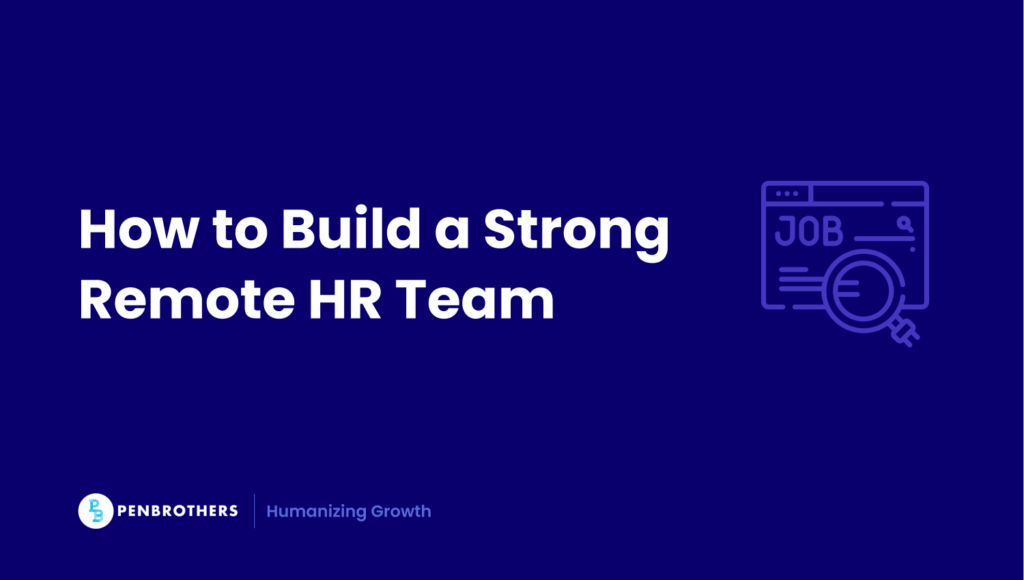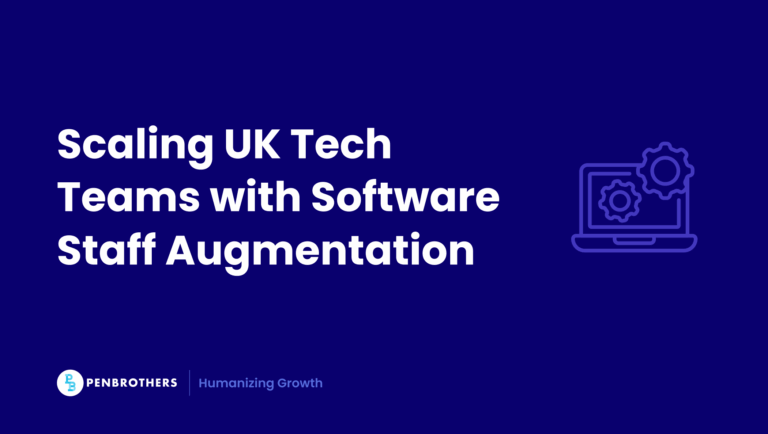You’re growing fast—but your HR team is stretched thin. Scaling operations without expanding headcount is tough. That’s why more companies are turning to remote human resources jobs for flexible, cost-efficient support.
Remote HR pros offer the same expertise as in-house teams, with added speed, global reach, and 24/7 coverage. For companies expanding globally, this isn’t just a hiring trend, it’s a strategic advantage. According to Gartner, nearly 48% of employees are expected to work remotely in some capacity post-COVID—up from 30% pre-pandemic. This signals a systemic shift across all business functions, including HR and compliance. The old centralized model simply can’t keep up.
What Makes HR Functions Remote-Ready?
Not every HR task requires a desk at headquarters. In fact, some functions perform better when decoupled from location constraints. Here are the HR responsibilities best suited for remote execution:
Recruitment and Talent Sourcing
Remote recruiters now have access to global candidate pools through modern ATS platforms like Greenhouse and Workable, combined with sourcing tools such as LinkedIn Recruiter and Hiretual. These systems enable real-time collaboration with hiring managers, automated pipeline tracking, and faster candidate engagement—regardless of geography. The result: shorter hiring cycles and access to more diverse talent.
Onboarding and Offboarding
Onboarding no longer requires physical paperwork or in-office orientation. With digital workflows, e-signatures, and pre-recorded welcome materials, remote HR teams can onboard new hires smoothly from any location. Tools like BambooHR and Sapling offer step-by-step checklists, automated document collection, and tailored onboarding experiences that scale with your team. The same applies to offboarding, ensuring compliance, exit interviews, and final pay processing happen without delays.
Payroll and Benefits Administration
Managing multi-country payroll has become significantly easier thanks to payroll platforms. These tools allow remote HR teams to handle salary disbursement, benefits enrolment, and statutory contributions—all without setting up an in-country legal entity. They also support currency conversions, tax calculations, and region-specific reporting, reducing compliance risk and overhead for your internal HR leads.
Compliance and Documentation
From employment contracts to labor audits, compliance is a core HR function that doesn’t require office presence. Remote HR professionals with local expertise can draft, review, and manage legally compliant documentation tailored to each market. Many teams now use centralized compliance dashboards that monitor key metrics, contract coverage, expiring documents, and regulatory updates—ensuring nothing falls through the cracks.
Learning and Development (L&D)
Upskilling remote teams doesn’t have to be synchronous. Platforms like Lessonly, 360Learning, and TalentLMS allow remote L&D specialists to create and manage scalable training programs. These systems support self-paced modules, certifications, and live learning sessions—all trackable and customizable per region or role. With the right coordinator in place, companies can deliver consistent training experiences across borders.
The key is standardization and tech integration. With the right processes, even culture-building and employee engagement can thrive in remote setups.
Check out this guide to types of HR software to see how the right tech stack can support distributed HR teams.
Key Remote HR Roles That Enable Growth
As companies scale, they don’t just need more people—they need the right people in the right roles. Here are five critical remote HR roles that help support global expansion:
- Remote Talent Acquisition Specialist
Focus: Full-cycle recruitment—from sourcing to onboarding.
Strategic Value: A remote talent acquisition specialist is critical for companies scaling across borders. They shorten time-to-hire by working across time zones, proactively build pipelines of qualified candidates, and source talent beyond local constraints.
Tools: Applicant Tracking Systems (ATS), sourcing tools like LinkedIn Recruiter, niche job boards, and recruitment automation platforms.
Why It Matters: In a high-growth environment, speed and quality of hire can make or break momentum. A skilled remote recruiter knows how to market roles globally while aligning candidates with both the job and the culture.
Explore smart talent acquisition strategies for growing teams.
- HR Operations Manager (Remote)
Focus: Process design, systems integration, data consistency.
Strategic Value: This role ensures the back-end engine of your HR function scales smoothly. From onboarding workflows to document version control and change logs, the HR Ops Manager builds the infrastructure that supports both compliance and efficiency.
Tools: Human Resource Information Systems (HRIS) like BambooHR or HiBob, document workflow tools like DocuSign or Notion, and integrations with payroll/benefits platforms.
Why It Matters: Growth exposes inefficiencies. A strong remote HR ops lead prevents information silos, automates low-value tasks, and enforces SOPs that scale.
- Compliance Advisor (Country-Specific, Remote)
Focus: Navigating labor laws, drafting compliant agreements, and monitoring regulatory changes in assigned geographies.
Strategic Value: Hiring remote or offshore talent introduces compliance complexity. This advisor mitigates risks related to worker misclassification, benefits obligations, and payroll taxes by tailoring contracts and HR policies to local legal frameworks.
Tools: Global labor law databases (e.g., Deel’s compliance center, RemotePass trackers), country-specific government portals, contract management systems.
Why It Matters: Legal missteps are costly. A compliance expert ensures that growth into new markets doesn’t expose the company to back pay penalties, misclassification fines, or contract disputes.
- Employee Experience Lead (Remote)
Focus: Driving engagement, internal communications, recognition, and feedback loops.
Strategic Value: This role designs initiatives that preserve and extend company culture as the team grows and diversifies. It includes managing engagement surveys, organizing virtual events, and maintaining a pulse on team sentiment.
Tools: Pulse survey platforms (e.g., Culture Amp, Officevibe), recognition tools (e.g., Bonusly), Slack integrations, async video tools like Loom.
Why It Matters: As teams scale remotely, cohesion can fade. The Employee Experience Lead creates intentional moments of connection and fosters a sense of belonging—critical for retention and morale.
5. HR Administrator (Virtual)
Focus: Calendar coordination, meeting scheduling, document organization, and payroll input support.
Strategic Value: A virtual HR admin acts as operational glue, keeping processes moving without delays. They prepare onboarding packets, track employee paperwork, and assist with timekeeping and leave audits.
Tools: Shared drives (Google Workspace), payroll systems (e.g., Gusto, Deel), scheduling tools (Calendly, Clockwise), digital filing tools.
Why It Matters: Even the most strategic HR leaders get bogged down by admin tasks. A remote HR assistant ensures the team stays focused on higher-impact initiatives by keeping day-to-day logistics organized and timely.
Not sure how this role differs from others? Learn what an HR Administrator actually does.
The Right Tools for Remote HR Teams
Remote HR success hinges on automation and visibility. Here’s the must-have tech stack for building and managing remote human resources jobs at scale:
Here’s the essential tech stack for scaling global HR operations remotely:
- Applicant Tracking Systems (ATS): Greenhouse, Lever, Workable
Streamline the entire hiring funnel—from sourcing and structured interviews to automated offers and onboarding handoffs. A strong ATS is the first layer of remote scalability in hiring. - Human Resource Information Systems (HRIS): BambooHR, HiBob, Deel
Centralize employee records, manage performance reviews, track time off, and ensure data consistency across locations. Modern HRIS platforms also offer self-service features to reduce administrative backlogs. - Global Payroll & Employment Platforms: RemotePass, Oyster, Papaya Global
Handle payments to remote contractors and employees in 100+ countries with built-in compliance tools. These platforms help avoid the need for local entities while offering tax calculations, currency conversion, and benefits administration. - Learning Management Systems (LMS): Lessonly, 360Learning
Enable continuous learning and upskilling across distributed teams. Whether it’s onboarding, compliance training, or leadership development, LMS tools ensure consistent delivery and tracking of learning outcomes. - Engagement & Feedback Platforms: Lattice, Culture Amp
Run pulse surveys, track engagement trends, and manage performance feedback loops. These tools help remote HR leaders stay connected to team sentiment and flag issues before they escalate. - Compliance Management & Risk Mitigation: Deel, Globalization Partners, localized legal advisors
Stay ahead of ever-changing employment laws, visa regulations, and tax obligations. These platforms and partnerships ensure that your contracts, classifications, and compensation remain compliant across borders.
The ideal stack is fully integrated, reducing manual handoffs and increasing real-time visibility for your People Ops leadership.
Ensuring Global Compliance and Risk Management
One of the biggest fears in hiring offshore HR support? Compliance. But a well-structured remote HR team reduces, not increases, this risk.
Here’s how:
- Country-Specific Expertise
Many offshore HR professionals bring deep knowledge of local labor regulations, employment classifications, and mandatory benefits. For example, HR specialists based in the Philippines often have formal training on DOLE (Department of Labor and Employment) policies, tax structures like SSS, Pag-IBIG, and PhilHealth, and common compliance pitfalls in BPO and tech sectors. This local expertise is crucial when hiring, drafting contracts, or managing terminations in unfamiliar jurisdictions. It also allows your global HR team to move faster, without waiting on costly legal consultations for every region.
- Structured SOPs Across Borders
Remote HR teams operate best with documented, repeatable workflows. By aligning Standard Operating Procedures (SOPs) to global HR policies—while allowing for regional flexibility—companies can maintain consistency in onboarding, documentation, performance reviews, and offboarding. This structure reduces errors, prevents misclassification, and ensures every HR process meets both internal standards and external legal requirements. It also helps distributed teams collaborate seamlessly, with clear ownership and audit trails for every process.
- Integration with EORs and Local Providers
When direct hiring in a new country isn’t feasible, Employer of Record (EOR) partners offer a compliant alternative. Remote HR professionals can manage day-to-day operations—onboarding, benefits, payroll setup—while the EOR handles the legal employment relationship. This hybrid model enables speed and control: you stay focused on people strategy while the EOR ensures compliance with local labor laws. Some companies also partner with local HR service providers for specialized tasks (e.g. statutory filings or audits), which remote HR teams can coordinate and oversee.
In the Philippines, where labor laws are evolving rapidly, having HR professionals embedded in the market helps companies stay ahead of regulations, especially for industries like healthcare, BPO, and tech.
Explore Penbrothers’ guide to HR outsourcing for a deeper dive into delegation models.
How to Manage and Integrate Remote HR Talent
Hiring remote HR professionals is just the first step. Integrating them into your workflows is where real scalability happens. Here’s how to do it right:
Onboard Like You Would Any Key Role
Remote doesn’t mean impersonal. Treat remote HR hires with the same care and structure you’d give to a senior in-house hire.
- Assign a team buddy or mentor to help them navigate tools, policies, and culture
- Schedule structured introductions with stakeholders across departments (e.g. Finance, Legal, Operations)
- Define clear goals for Day 30, 60, and 90, especially around tool adoption, documentation ownership, or regional rollouts
This builds early trust and helps them become productive faster.
Align Tools, Access, and Permissions
System delays create productivity gaps. Ensure that remote HR professionals are set up from Day 1 with:
- Full access to your HRIS, ATS, payroll platforms, shared drives, and documentation repositories
- Visibility into team calendars and communication tools like Slack, MS Teams, or Zoom
- Role-based permissions that reflect their responsibilities, especially if they manage sensitive data
This not only enables efficient execution but also avoids compliance or data integrity risks down the line.
Set Clear KPIs and Reporting Structures
Remote teams thrive with clarity. Establish performance metrics that align with business outcomes, not just activity.
- For recruiters: time-to-fill, quality of hire, and candidate experience (CSAT/NPS)
- For HR operations: policy compliance rates, ticket resolution times, and documentation accuracy
- For L&D: course completion rates, engagement scores, and ROI on training investments
Regular check-ins and dashboards ensure everyone stays accountable and aligned with business priorities.
Promote Cross-Functional Visibility and Belonging
Remote HR teams shouldn’t operate in silos. Make them visible participants in your company’s rhythm:
- Include them in all-hands meetings, strategic planning sessions, and culture initiatives
- Create Slack channels or forums where they can contribute to ongoing HR discussions
- Rotate them into cross-functional projects (e.g. DEI initiatives, engagement surveys, or systems upgrades) to deepen alignment
This encourages collaboration, builds empathy across teams, and embeds your HR values globally.
Invest in Continuous Learning and Career Growth
Top-performing HR professionals want to grow, regardless of location. Show your commitment by supporting:
- Professional certifications like SHRM, CIPD, or local HR compliance training
- Subscriptions to HR communities and learning platforms
- Involvement in internal knowledge-sharing or mentoring programs
For reference, here’s a comprehensive guide to SHRM certification to help your remote team upskill and stay current.
Final Thoughts
Remote human resources jobs are no longer experimental—they’re essential. For companies looking to expand quickly without overwhelming their internal teams, offshore HR professionals provide the flexibility, compliance, and operational support needed to scale sustainably.
It’s not about replacing your core team. It’s about building a distributed HR engine that can:
- Support 24/7 global operations
- Integrate seamlessly into your workflows
- Stay compliant while managing costs
- Free up your internal HR leads to focus on strategy
At Penbrothers, we help companies like yours build scalable HR teams that work remotely. Whether you need a recruiter in Manila, an HR administrator in Cebu, or a compliance expert with regional experience, our team ensures smooth onboarding, long-term retention, and world-class support.
Ready to scale your HR function without scaling your payroll? Let’s talk.






